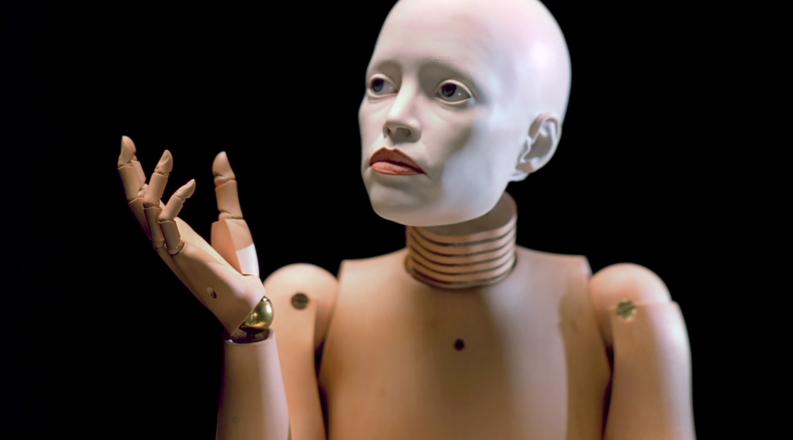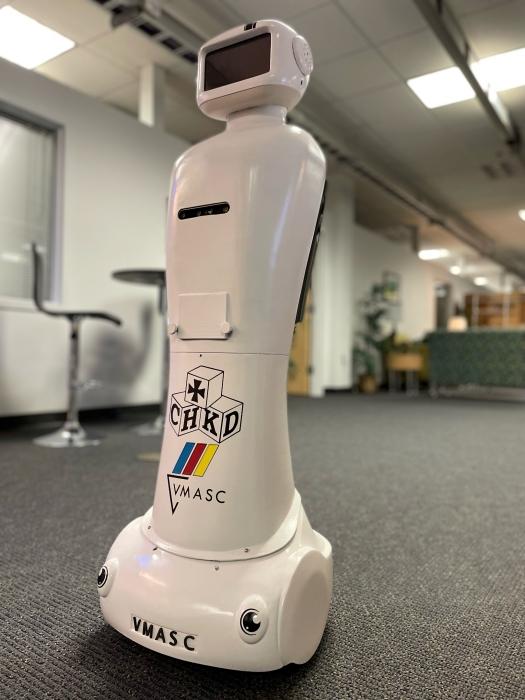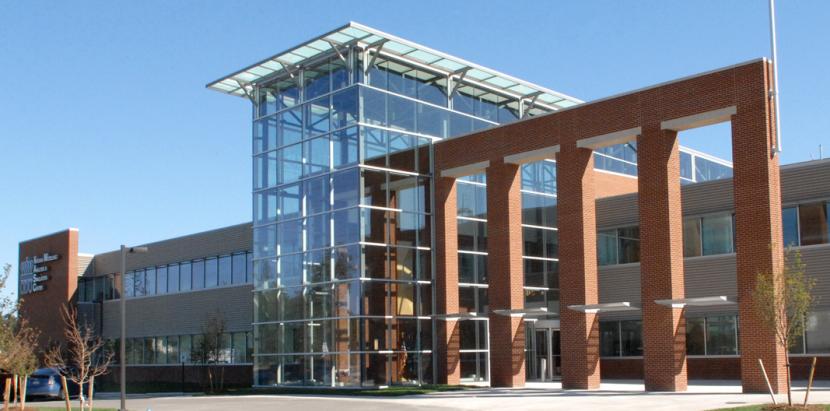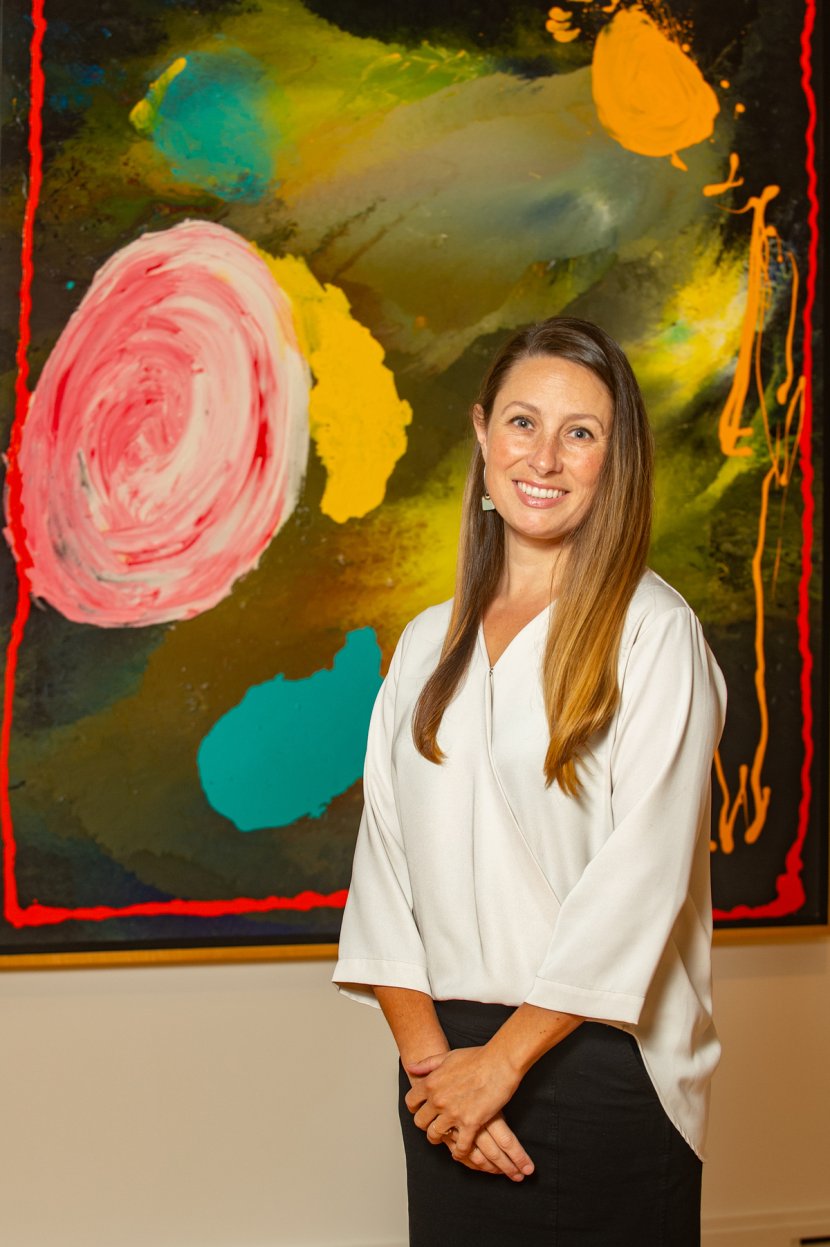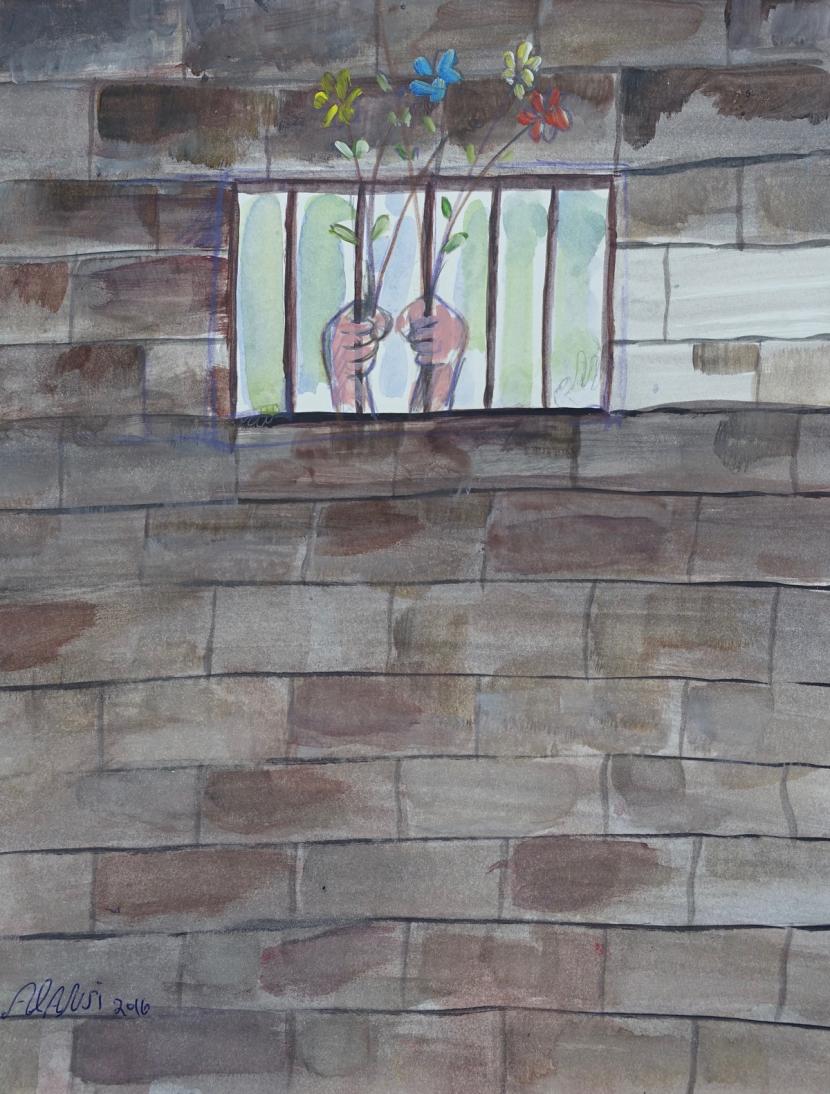The exhibition marks the public debut of “David’s Project,” a telehealth robot prototype built by ODU faculty and researchers for use in children's hospitals.
By Amber Kennedy
In 1978, robotics professor Masahiro Mori coined the term "uncanny valley" to describe the uneasy feeling humans have when they encounter increasingly humanlike robots. A new exhibition at the Barry Art Museum will delve deep into that valley, inviting viewers to engage with automata and robots to better understand what it is to be human.
"Motion/Emotion: Exploring Affect from Automata to Robots," opening Feb. 10, draws inspiration from the museum's collection of historical automata. Automata are kinetic sculptures that predate modern robotics. The collection includes 19th-century porcelain dolls that seemingly come to life.
The exhibition highlights how contemporary artists Elizabeth King and Joseph Morris continue the tradition of giving humanlike qualities to clearly nonhuman figures. The show will also display how Old Dominion University researchers and alumni are designing robots to tap into human emotion to train and comfort people.
"Using the organizing factor of humanoid robots has allowed us to assemble a comprehensive cross-section of contemporary artists and scientists who explore the myriad of ways that robots evoke emotion," said Charlotte Potter Kasic, executive director of the Barry Art Museum. "We are delighted to have the opportunity to debut works researched, developed and fabricated by ODU faculty and alumni for industrial applications staged alongside artistic interpretations."
Artistic Interpretations
In her Richmond studio, King creates sculptures that look like mannequins, but move like humans. With painstaking attention to detail, King uses stop-motion photography to animate her figures, each subtle gesture conveying both physical and emotional movement. She seeks to "blur the boundary between actual and virtual object," according to her website.
By contrast, Morris makes sculptures he calls "emotive machines," capturing human movement in objects with no resemblance to the human form. Morris uses technological processes to make materials - like plastic film, electronic and mechanical parts, software and spring steels - breathe, heaving with the same movement as a human chest.
In his artist's statement, Morris writes, "Each piece is an experiment in empathy: a machine, or an object, or a sound trying to make you recognize something in yourself."
Scientific Solutions
Three robots in the exhibition built by ODU researchers and alumni use intuitive technology to address human challenges, from loneliness to bias to threat assessment.
The exhibition marks the public debut of "David's Project," a telehealth robot conceived by Tina Gustin, the co-director of ODU's Center for Telehealth Innovation, Education and Research (C-TIER) and clinical manager for the Pediatric Telehealth program at Children's Hospital of The King's Daughters (CHKD).
Gustin met David Carey, a patient fighting acute lymphoblastic leukemia at CHKD, while offering pet therapy sessions with her dog, Dharma. She mentioned her work to Carey's father, Michael, who suggested a robot could provide a way for hospitalized children in isolation to visit with other patients or engage in playroom activities without leaving their beds.
Gustin is collaborating with Yiannis Papelis, a research professor at the Virginia Modeling, Analysis and Simulation Center (VMASC), to build the first telehealth robot for children. The robot is named in memory of David, who died at the age of 13 in 2019. The team worked with students at the Governor's School for the Arts to identify a kid-friendly design, constructing a prototype with the approximate height of an average 8-year-old child. The team hopes to begin testing the prototype at CHKD this year.
"I would like to think that if we built this robot correctly, both on functionality and appearance, you'll forget it's a robot," Gustin said. "I want it to be an agent of the child, and I want them to feel independent and engaged with other children."
Carey's mother, Elizabeth, believes the project has limitless potential and could someday be used in schools or nursing homes. She envisions David's Project could provide users a sense of control where they have none, and connection they sorely need. When David had rare opportunities to connect with friends or indulge in his love of cycling, she saw an immediate difference.
"It gave us our kid back," she said. "It was a lifeline to the David we knew and loved."
Robots Train Law Enforcement, Military
Robots are also being used to mimic real-life scenarios faced by law enforcement. SimIS, Inc., an autonomous solutions company started by ODU alumni Johnny Garcia '11, has created an Autonomous De-escalation Robotic Trainer (ADRT) that will be on display in the exhibition. The ADRT uses humanlike robots to train law enforcement personnel how to read dialogue, body language and physical movements with the goal of de-escalating tense or potentially dangerous encounters.
Robots are also being used to provide military with realistic moving targets for training. SimIS designed Human Type Targets (HTT) as mobile, trackless smart targets that can be deployed in a wide range of environments. The HTT system is semiautonomous, able to preprogram scenarios that capture instant feedback for trainees. The robots have 3D torsos mounted on wheels.
Robotics offer several advantages for training, including constant repetition, time and cost savings, data capture and playback.
"With the use of robotics, artificial intelligence and data science, law enforcement and military can create reusable environments to provide realistic training at a fraction of the cost," Garcia said. "I am excited the Barry Art Museum is showcasing SimIS's autonomous systems in the exhibit. That reflects the importance of the multiple disciplines ODU provides to its students and industries to create environments that make the world a better place to live."
"Motion/Emotion" was guest curated by Sara Woodbury, a doctoral candidate in American studies at The College of William & Mary. The exhibition is presented by The George and Grace Dragas Family Foundation and Dragas Companies with support from Susan and David Goode. The exhibition advisory committee includes Gustin; Khan Iftekharuddin, interim dean of the Batten College of Engineering and Technology; Peter Eudenbach, ODU art department; Petros Katsioloudis, Darden College of Education and Professional Studies; and Yvette Pearson, ODU Philosophy and Religious Studies.
FREE PUBLIC PROGRAMS:
The Barry Art Museum offers free museum admission and free public programs, including a monthly lecture series, U-Nite after-hours events and exhibition opening receptions.
The monthly lecture series occurs on the first Thursday of each month. At 6 p.m. Feb. 3, the exhibition advisory board will lead a panel discussion regarding the curation, research and programmatic planning for "Motion/Emotion." Register for this free Zoom event here.
From 5 to 8 p.m. Feb. 11 at the Barry Art Museum, the public is invited to the exhibition opening reception, with complimentary light refreshments and a cash bar. Barry Art Museum members will receive a complimentary beverage ticket. RSVP is encouraged, but not required.
The monthly U-Nite series occurs on the second Friday of each month. At 5 p.m. March 11, "U-Nite: Movement and Breath" will feature interactive demonstrations from movement and meditation specialists to encourage appreciation for the human form. This free event is open to the public and offers light refreshments and a cash bar.
For the full spring schedule, visit barryartmuseum.odu.edu/learn.



